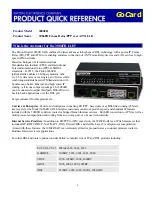
3Com Switch 8800 Configuration Guide
Chapter 8 VLAN Configuration
8-1
Chapter 8 VLAN Configuration
8.1 VLAN Overview
Virtual local area network (VLAN) groups the devices in a LAN logically, not physically,
into segments to form virtual workgroups. IEEE issued the IEEE 802.1Q in 1999 to
standardize the VLAN implementations.
The VLAN technology allows network administrators to logically divide a physical LAN
into different broadcast domains or the so-called virtual LANs. Every VLAN contains a
group of workstations with the same demands. The workstations, physically separated,
are not necessarily on the same physical LAN segment.
You can establish VLANs of the following types on switches:
z
Port-based
z
MAC address-based
z
IP multicast-based (A multicast group can be a VLAN.)
z
Network layer-based (A VLAN can be established by the network layer addresses
or protocols of the hosts.)
With the VLAN technology, the broadcast and unicast traffic within a VLAN will not be
forwarded to other VLANs. This is helpful to control network traffic, save device
investment, simplify network management and enhance security.
8.2 Configuring VLAN
The following sections describe VLAN configuration tasks:
z
Creating/Deleting a VLAN
z
Specifying a Description Character String for a VLAN or VLAN interface
z
Creating/Removing a VLAN Interface
z
Shutting down/Bringing up a VLAN Interface
8.2.1 Creating/Deleting a VLAN
You can use the following commands to create/delete a VLAN. If the VLAN to be
created exists, the system enters the VLAN view directly. Otherwise, the system
creates the VLAN first, and then enters the VLAN view.
Perform the following configuration in system view.
















































